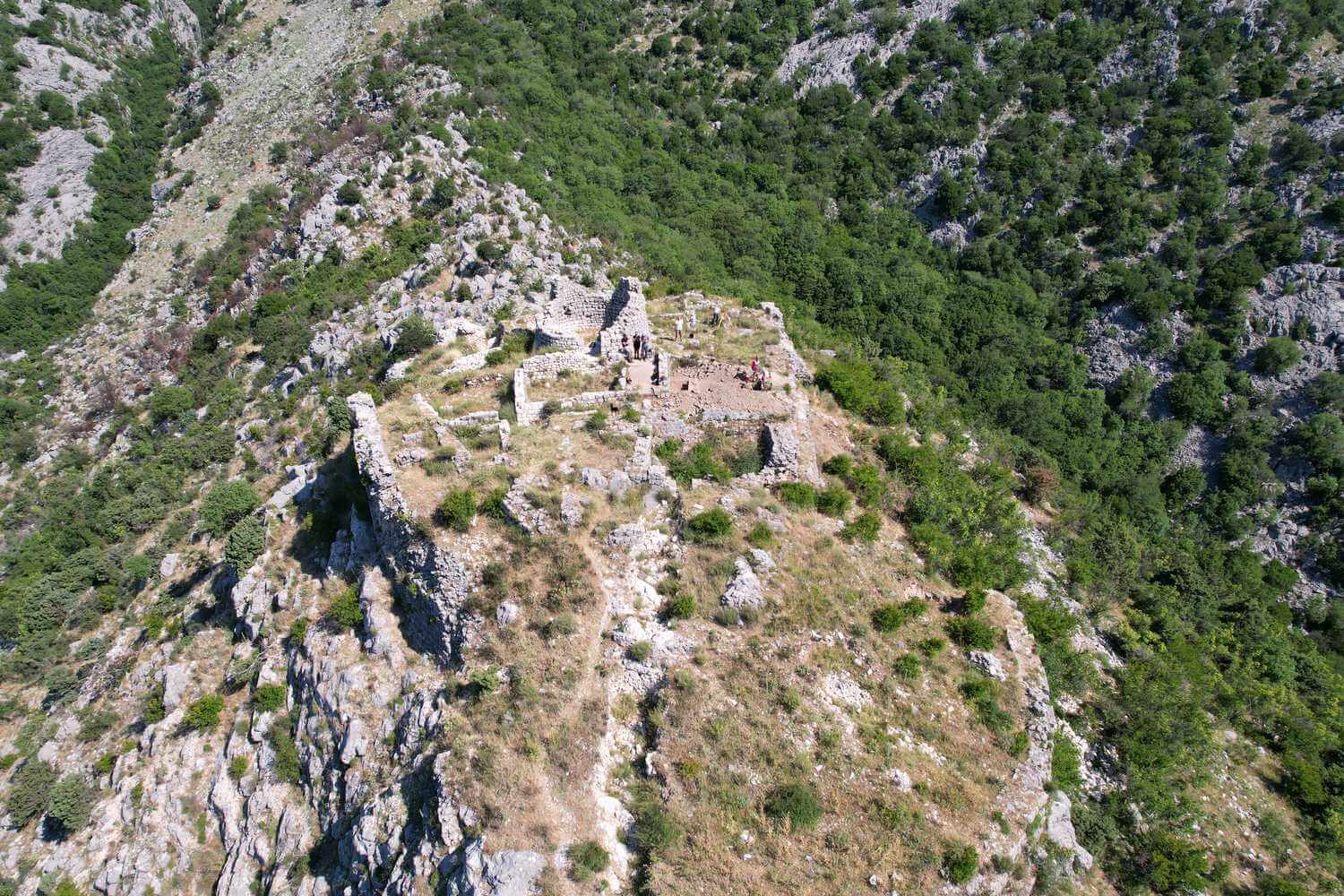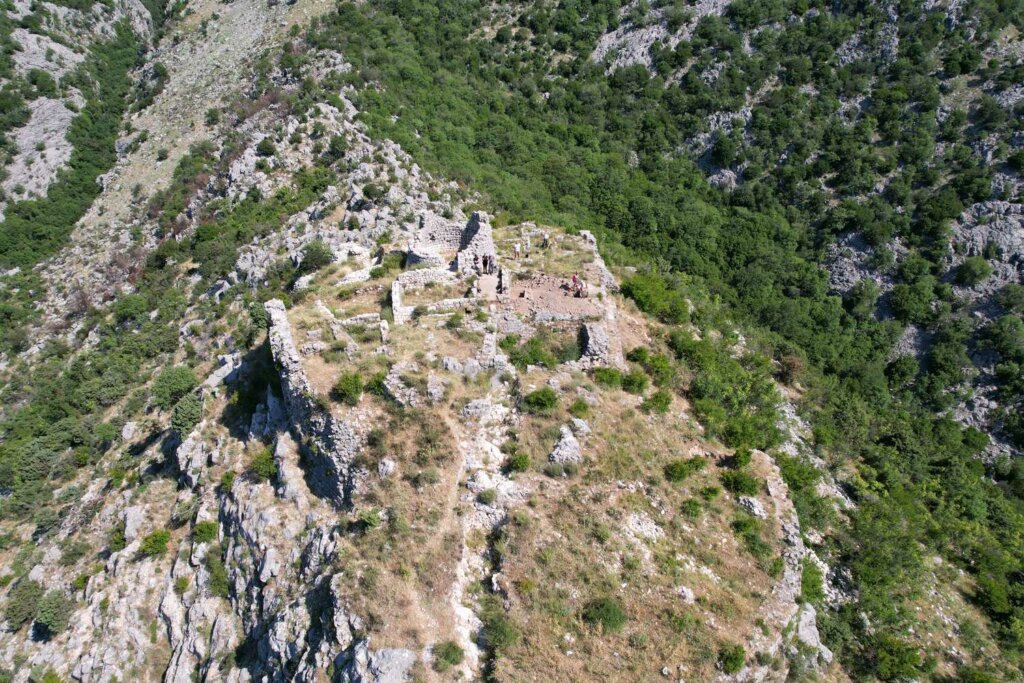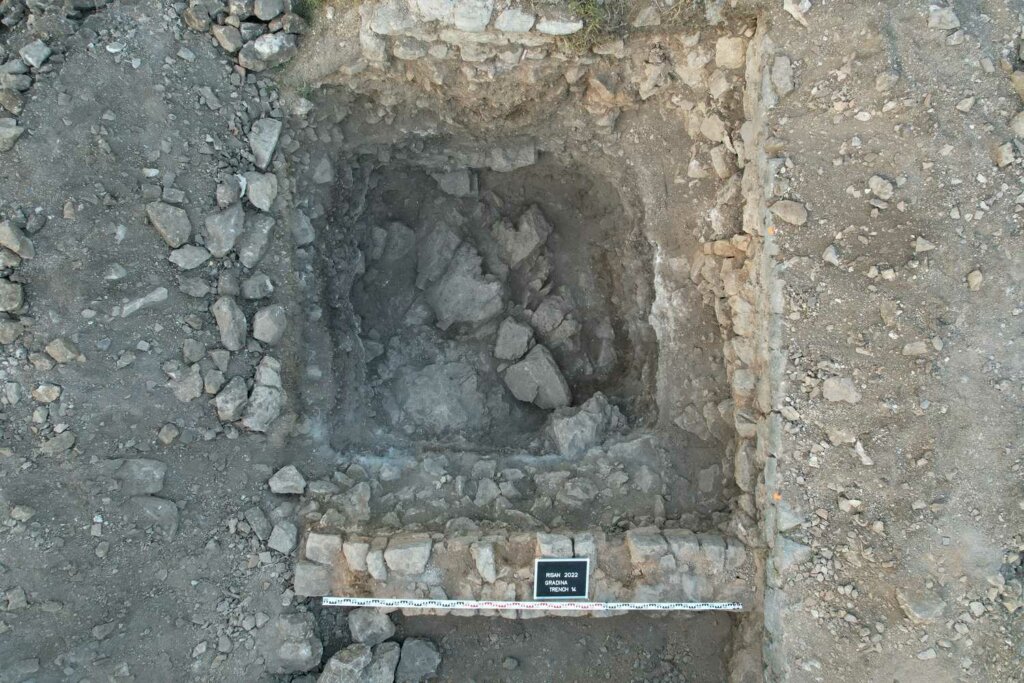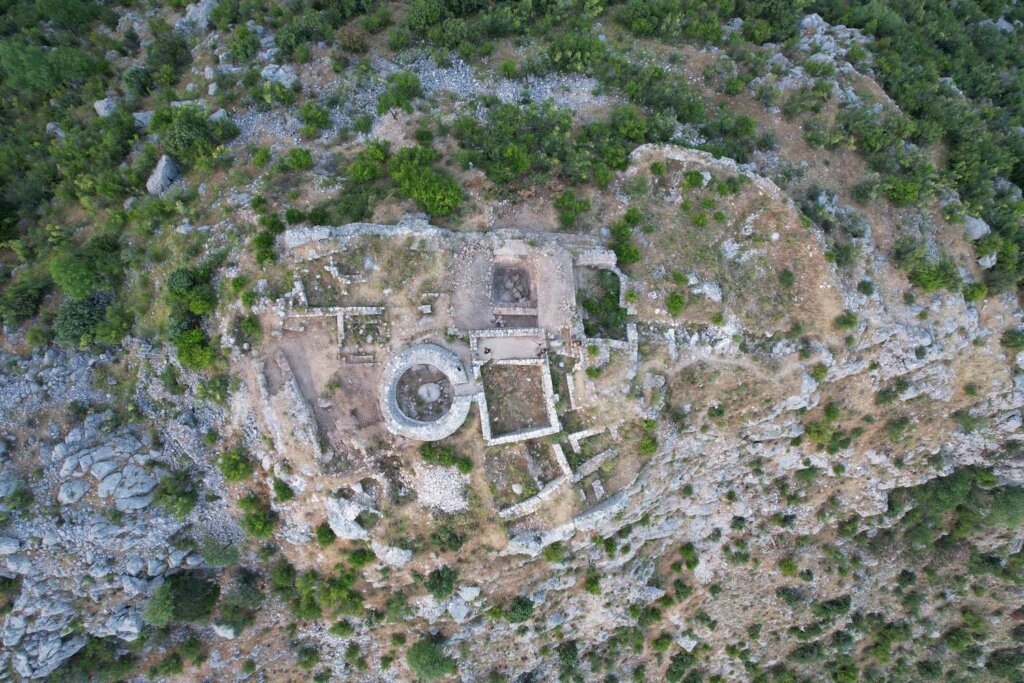Summer ’22 with the Centre II


Tempus fugit… the Romans were right. It seems that we have only just started the excavations at Risan, and it is already over.
In this year’s intensive and difficult campaign, we focused on completing primarily the architectural documentation of the Risan acropolis. To this end, verification surveys were set up.
The completed set of documentation makes it possible to definitively establish the building sequence of the Risan acropolis or ancient Rhizon – de facto since the Bronze Age.
The relatively small area on which construction was possible meant that, in successive periods, older buildings were dismantled to their foundations and further structures were then erected on the bedrock. However, archaeological material has been preserved in the folds of the rocks and on the edges of the hill, allowing us to piece together the history of the buildings with the known facts recorded in the written sources.

We now know that originally, in the Bronze Age, a small kraal was erected on the acropolis, whose enclosure was made of broken stones. With the development of the Illyrian culture, most likely in the early 3rd century BC, a temple to the god Medaur was erected on the hill, with a ceremonial road leading to it from the lower city. Archaeological data indicate that a mint was also located there at that time. The temple survived until Roman times – at least until the middle of the second century AD. We know that the hill was intensively used until the 4th century AD.
After a long hiatus, archaeological data convicts that there was probably a small church on the hill as early as the 14th century AD. In 1482 Risan became part of the Ottoman Empire and at that time a small fortress was erected, which was only briefly overrun by the Venetians in the early 16th century AD. However, in the mid-17th century AD, it was they who destroyed these fortifications.

This historical sequence is reflected in the monuments. In this year’s campaign, permanent elements of Hellenistic buildings were exposed for the first time. These were accompanied by Hellenistic amphorae. Later periods are also reflected in the archaeological material – Late Roman amphorae, glazed Turkish pottery, and finally Venetian majolica.
It is hoped that, once all the material has been compiled, it will be possible to reconstruct the exact history of this extremely important site and relate its history to that of the lower city.
Now, after a brief interval in the country, we will head over the lower Danube to Novae.
